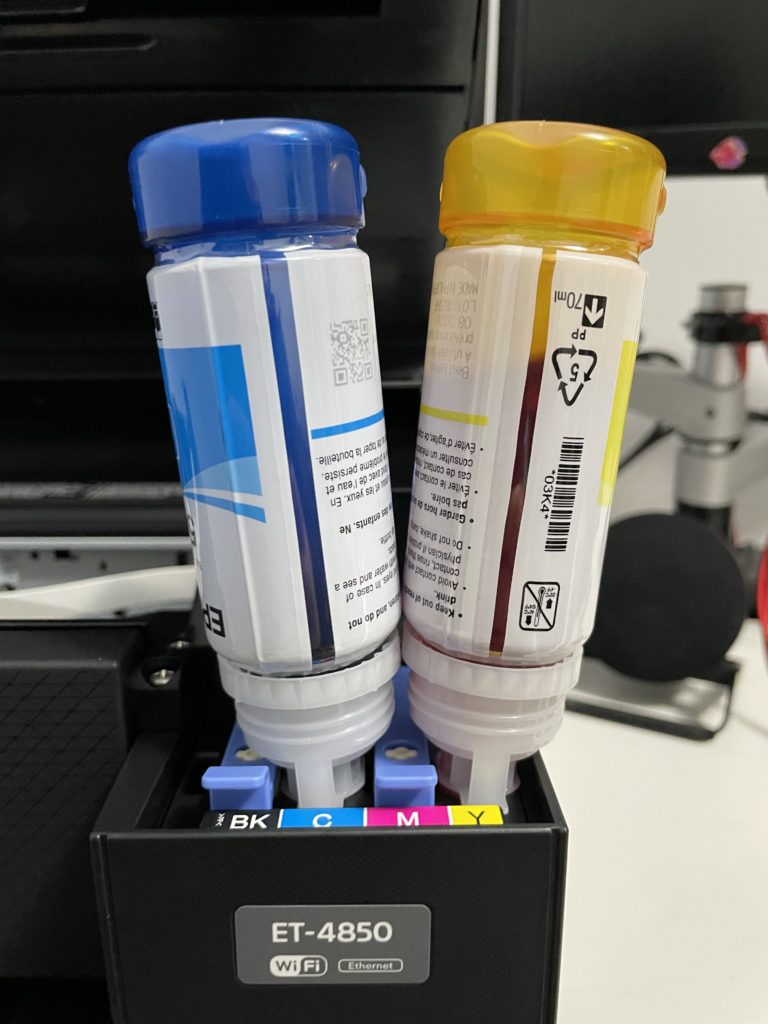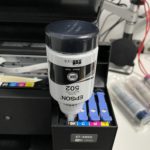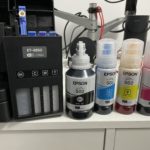Most people know that when your printer eventually runs out of ink or toner, the wallet is in for some bad news; the trend in recent times with printers has been a fairly cheap (almost misleading) up front price, and where printer manufacturers make their money is in ink refills.
It’s a variation on the bait and switch; draw them in with a cheap up-front cost, get people hooked (i.e. familiar with the printer, setup on all their PCs and devices, etc), and then when they run out of ink or toner, charge a fortune to refill it.
Epson’s EcoTank printers buck this trend; their printers fairly priced for the feature set, offering a swathe of features for a price comparable with printers with very expensive refills. Better still, when it eventually comes time to refill (and, unless you print excessively, it might be years) you won’t have to take out a small loan.
Epson’s EcoTank ET-4850 will set you back around $650 depending where you buy it. For that price, not only does it come with four full tanks of ink (black, cyan, magenta and yellow), but you get printing, scanning, copy, fax, a document feeder, cloud connectivity and more.
Once you’ve bought your printer, your refills in future will set you back around $75 in total, and that’s for enough black ink to print around 7,500 pages, and enough colour ink for around 6,000 pages.
Refilling couldn’t be easier. Crack open the lid of your printer, pop the lid off your ink refills, and decant them – it takes about 5 minutes to fill up all four tanks, and the empty ink bottles are completely recyclable:
Compare this with some cartridge-style inkjets, which can cost more than twice as much to refill; HP’s OfficeJet Pro 7740, for example, costs $329 upfront and can print on A3, and otherwise has a fairly similar feature-set.
Refills will cost you $169 for a set of four (black, cyan, magenta and yellow) but there’s a nasty catch. See, you might think “Hmmm, at $329, it’s around half the price, and the refills aren’t that much more expensive” but .. that $169 refill will print you around 700 pages (so, in reality, around 700 B&W prints, and 700 in colour, or less if you combine).
At $169 for (at most) 1,400 pages, you’re paying around 12c per page on average. Contrast with Epson’s EcoTank which will set you back a miserly $0.005 per page (that’s half of one cent) and the savings quickly start to add up.
With laser printers, the figures are even worse.
A fairly basic colour laser will set you back around $350 ish, and that includes a little bit of toner to get you started. It looks nice, it’s wireless, prints 18 pages a minute in colour, and sounds pretty good, right?
What happens when your toner runs out?
With a black toner cartridge costing $155, and the colours costing $115 each, a full set will set you back $500. The page yield isn’t amazing either; around 2,500 pages from the black, and around 1,300 from the colours.
At $500 to print (at most) 3,800 pages, you’re looking around 13.1c per page, more expensive than the cheap cartridge inkjet, and hugely more expensive than the EcoTank.

Why anyone would buy a cartridge-based printer, or even a colour laser, for a home/small office situation, I have no idea. Obviously you do get economies of scale with higher-end colour lasers; a busy office generating reams of printed material is hardly going to get by with an inkjet, cartridge based or tank based.
But for those of us working at home or in small offices, especially where budgets are a little tighter, an EcoTank printer makes so much sense you’ll wonder why you hadn’t thought of it earlier.







Inktank printers seem to be the way to go. Canon and Brother have also jumped onto the bandwagon. When My current Canon TS8160 dies (I only still have it because it prints CDs) my next one will be an Epson or Brother printer